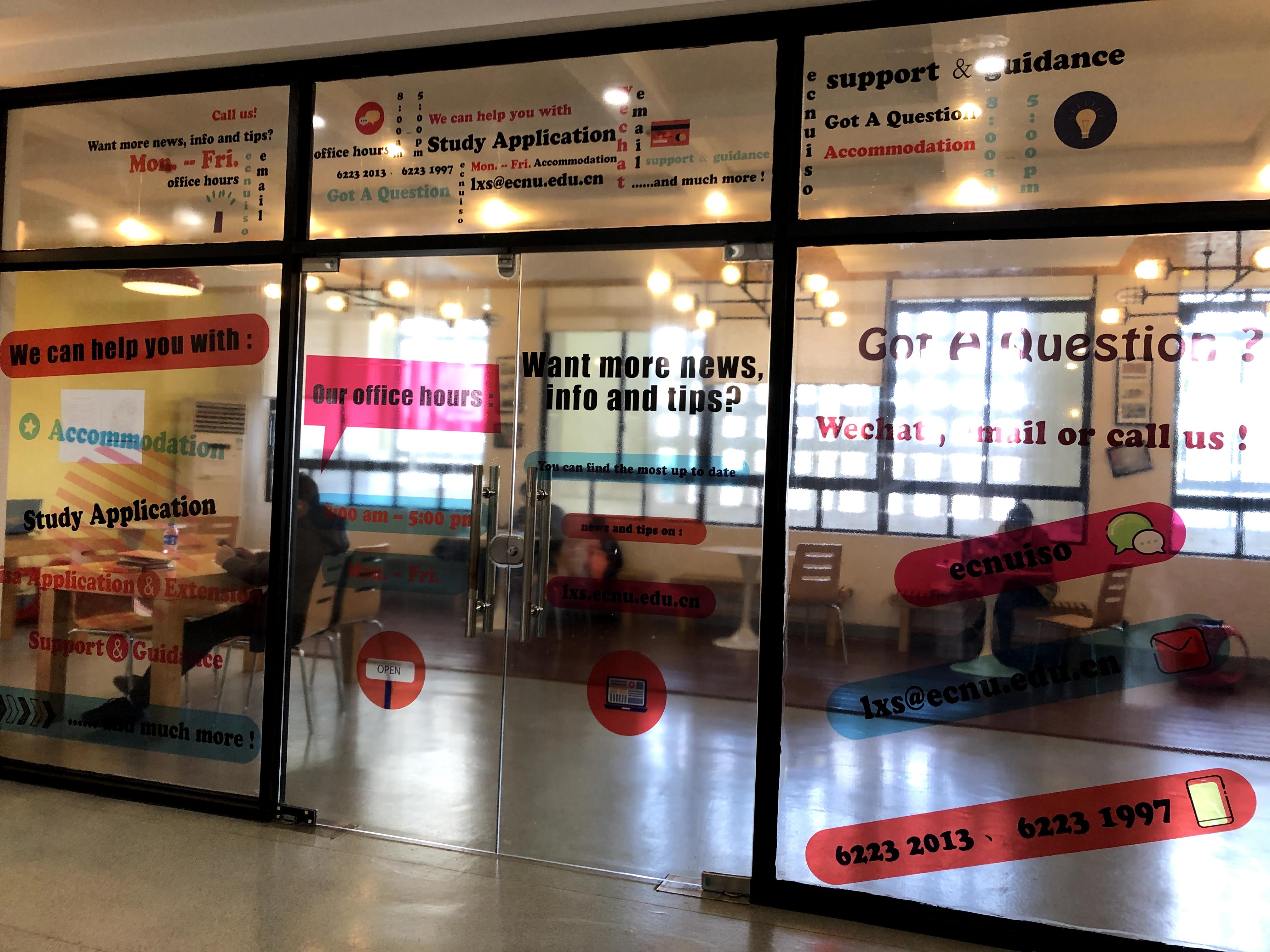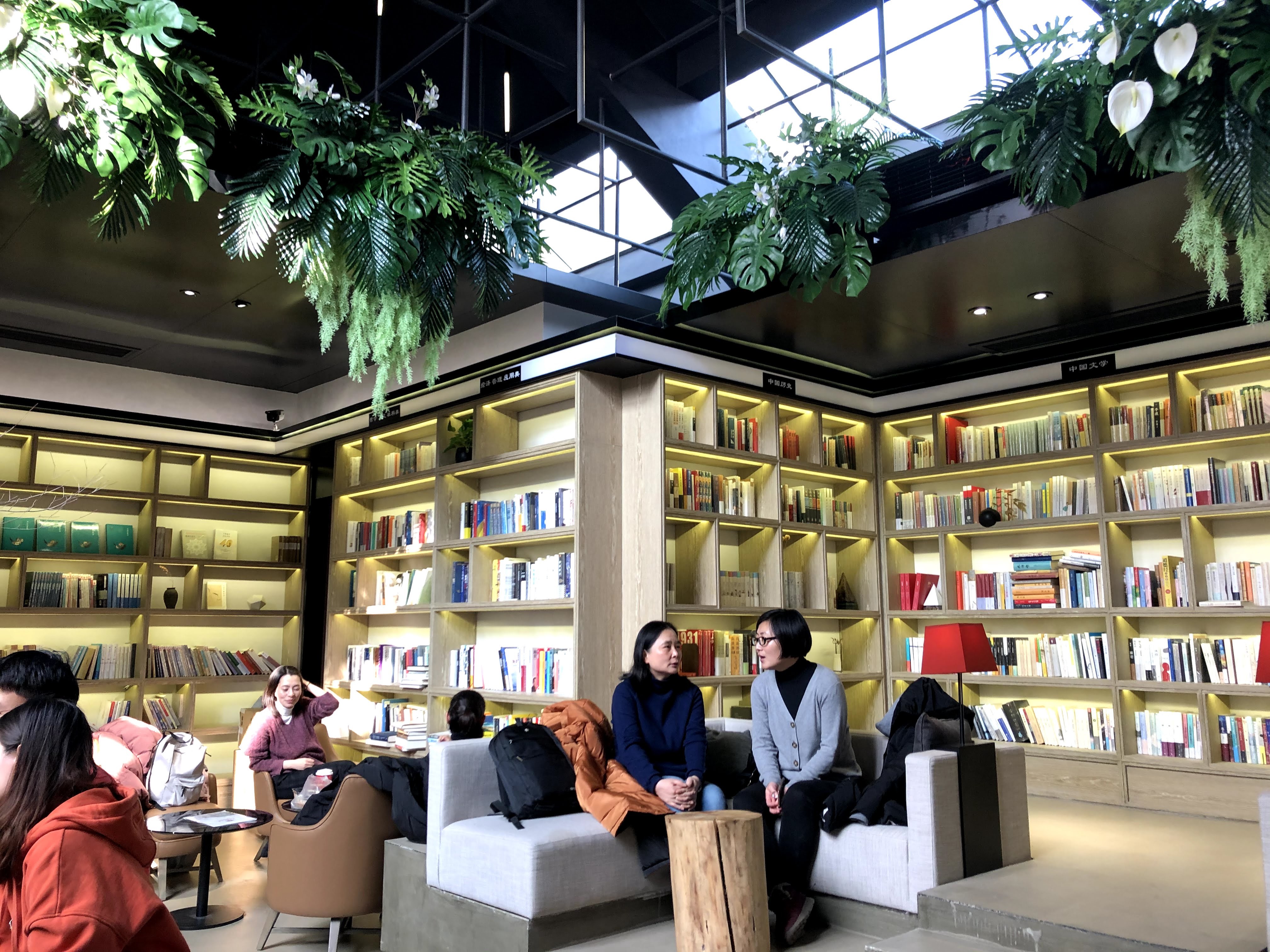Guided Tour
Working in groups, we created walking tours in our target learning language’s location (Shanghai). We applied our ethnographer skills and considered a theme and space that would best create a thematic walking tour.
Tour Guides
Clare Wongwai, Anabelle Xiong, and Mei Kreibich
Site
East China Normal University (ECNU) and Global Harbor
Topic
Student’s day to day life at ENCU
Theme and Rationale
We wish to focus on college students’ everyday lives in Shanghai. Through focusing on mundane and often overlooked aspects of everyday life in modern Shanghai, we will be able to compare cultures and gain deeper understandings of a student’s experiences at ENCU. We are bound to find both small and large differences among college students going to ECNU in Shanghai and college students from St. Olaf in Minnesota. In order to gain an insight into the lives of students on campus while not being able to interview them, we consulted the International Program Director, Emma (佳灵). We asked her questions relating to how students complete chores, where they hang out, and how they experience student life on campus. She provided us with a lot of specific information and locations pertaining to ECNU students. We then visited each site during our dry-run tour where we decided exactly which stops to make during our tour.
Itinerary
-
First is the physics academic building with classrooms and includes one of the most popular study spaces students go to
-
Pass by two on-campus convenience stores (i.e. Family Mart)
-
Visit Dorm 2 where there are drying machines (unlike other dorms where students hang their clothes to dry outside) as well as kitchens on each floor where students often cook if they don’t eat at the cafeteria
-
Many students study in the common space in Dorm 2 however, we learned that the students at ECNU stick to the same groups and don’t socialize in common areas as much as in comparison to St. Olaf College
-
There is an alleyway that leads to the post office where students pick up their packages because online shopping is the most common form of shopping that students do
-
Pass by the basketball courts and sports field outside- although there is a student activity center, it requires a fee, so students often just play outside
-
We walked through the cafe that also serves as a bookstore/cafe full of people quietly studying
-
Pass by Perry’s Bar, a popular and closeby bar that relies on the ECNU students as regular customers
-
Nearby is the metro station, making the city of Shanghai easily accessible
-
Lastly, on the tour, there is Global Harbor’s Tesco Supermarket where students often go to buy their groceries




Images from left to right
(1) Study space in the Physics Building
(2) On-campus cafe and bookstore
(3) Tour group
Back- Teddy, Annika, Jacob, Amber
Front- Mei, Anabelle, Clare
Our Reflection
The main focus of our guide was to provide a cohesive understanding of a student’s life at East China Normal University (ECNU). Upon our arrival, we knew that we would be taking a closer look at our preexisting personal stereotypes and expectations of college student’s lives based on our understanding and experiences at St. Olaf and other colleges. Through direct experience, observation, and speaking with the program coordinator who worked with St Olaf, Emma, we were able to engage in conversation about the cultural differences of ECNU students’ social spaces in comparison to most “American” universities.
One outstanding difference we noticed was the contrasting ways typical ECNU students socialize and the way we and numerous other American students socialize. Emma mentioned that most students did not use designated social spaces to socialize. Instead, they would socialize in the most convenient spaces like their dorm rooms.
Through touring the campus firsthand, we were able to dispel previously constructed stereotypes solely based off of generalizations. We expected to walk around a campus that looked similar to St. Olaf’s, full of students sitting and chatting or walking between classes. It could’ve been due to finals week, but we did not notice any students hanging out or any large groups around campus. Instead, we witnessed the most students in the cafeteria on a regular basis. Additionally, we anticipated interacting more with the students that lived in the same building as us, but there was never space or time for these interactions to take place.
Observing through direct experience, we could see for ourselves how students interacted with others and functioned independently in different spaces on campus. For instance, the bookstore cafe was dead silent except for the quiet piano music playing in the background. In contrast, if one were to step onto the third floor of St. Olaf’s library, they would be greeted by loud chatter, filling the room with an entirely different atmosphere, indicating different expectations. Another interesting aspect we looked into is the differences between dorm buildings. The more popular dorms were located closer to the cafeteria on the south side. They also had dryers, which a majority of the dorms lacked. This inspires further questions concerning how dorms are assigned and the reasons behind certain dormitory advantages versus disadvantages.
Although we lived on the campus, ate in the cafeteria, and explored the local area, we are still limited in our understanding of ECNU’s student life. We may never really grasp an ECNU student’s perspective because our experience as international students staying on campus for two weeks with a familiar cohort provides us with a different environment in comparison to those who attend the university.